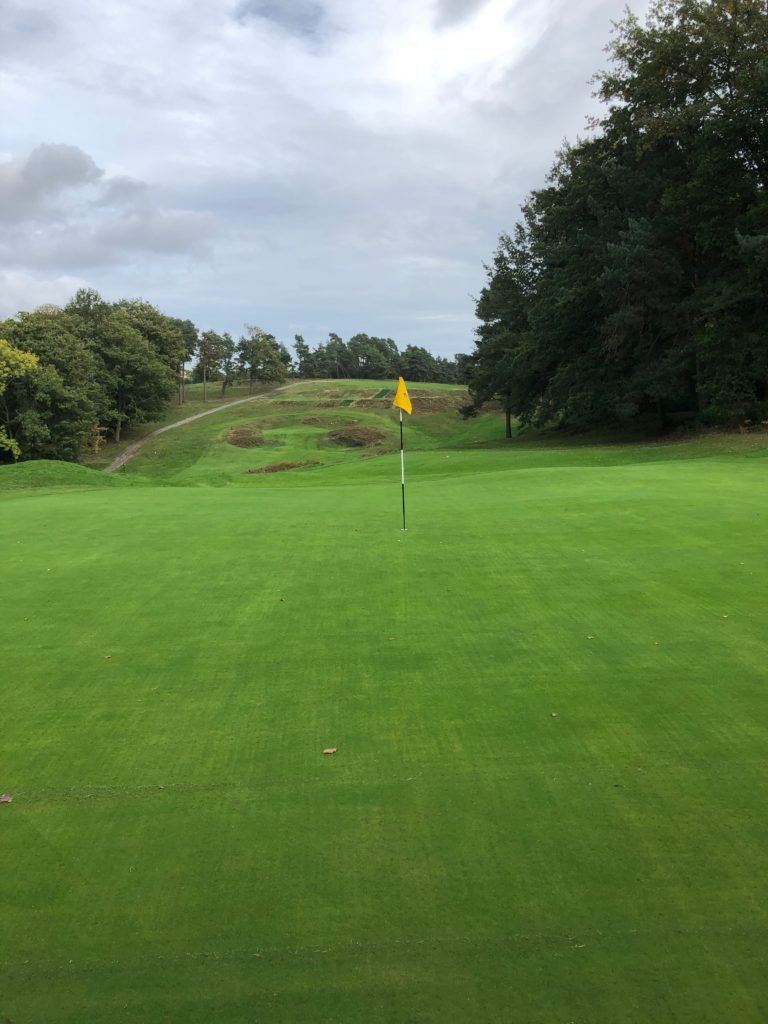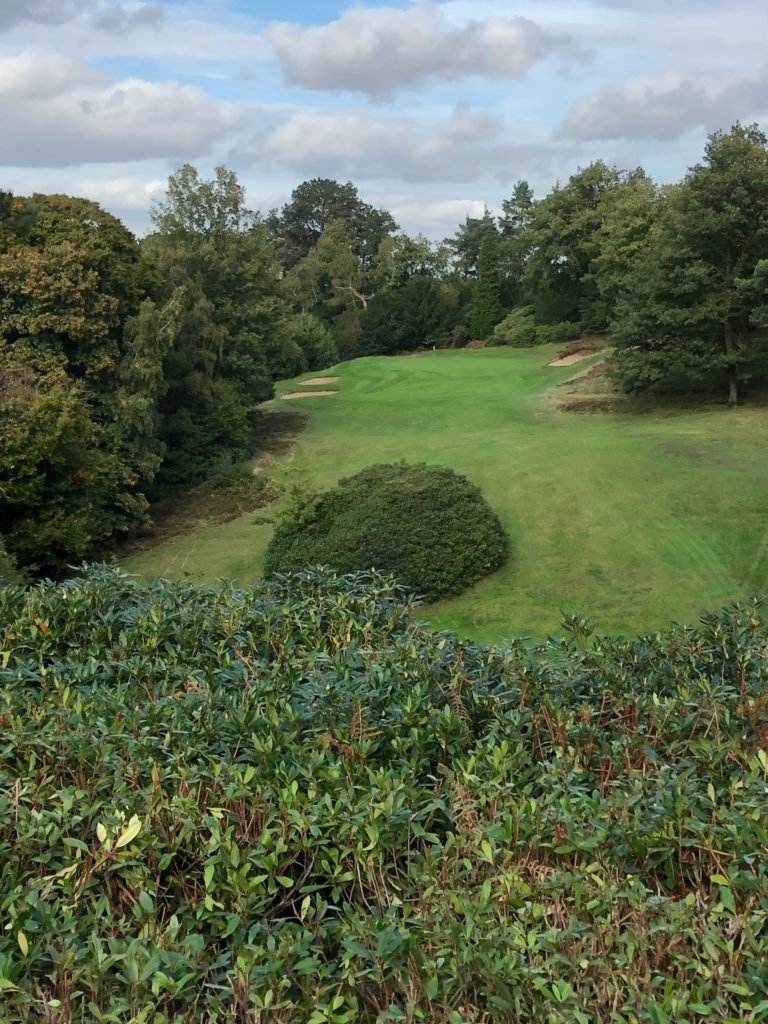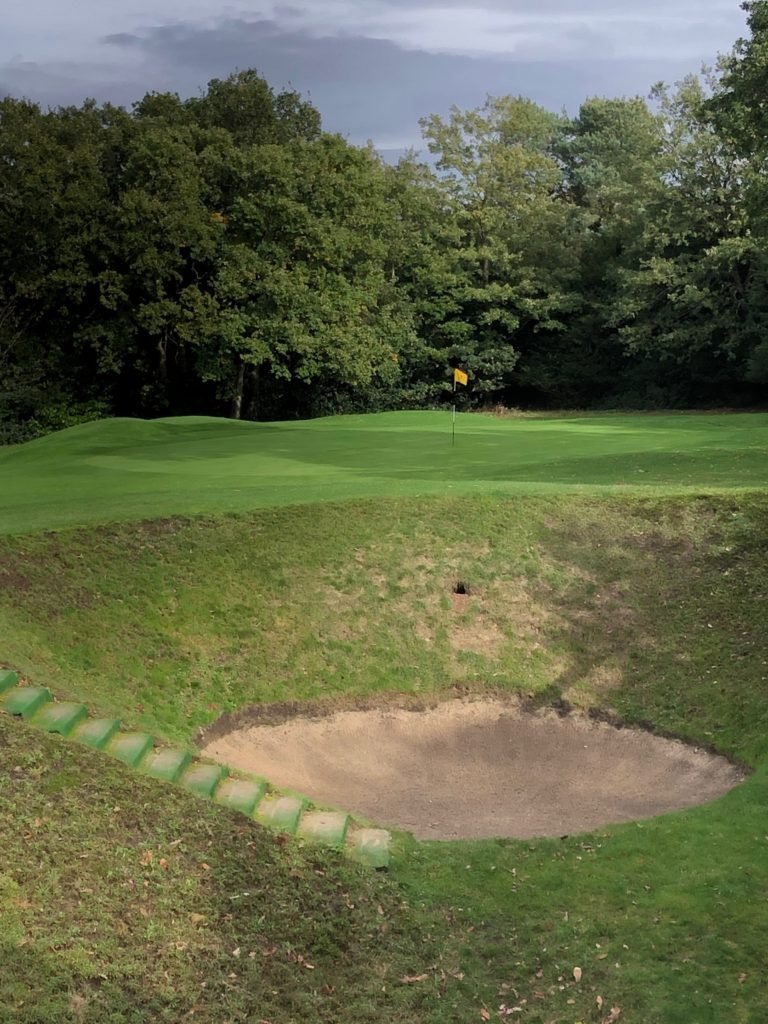The other day I went to The Addington Golf Club in Croydon. I hadn’t been there for over 30 years. The outer suburbs of southeast London might seem an unlikely place to find an outstanding golf course but that is the case here.
The club was founded in 1913, the course the work of John Frederick Abercromby, who had previously laid out two other fine Surrey courses, at Worplesdon and Coombe Hill. Abercromby lived there until his death in 1935, which meant he just missed out on King George VI becoming patron of the club two years later. For a while it became informally known as ‘Royal Addington’. Bernard Darwin, the renowned golf correspondent of The Times, was an honorary member. Another writer of even greater fame, P.G. Wodehouse. wrote of the solitary bunker on the 6th: “Anyone wishing to write to the author should address all correspondence to P.G. Wodehouse, c/o the sixth bunker, The Addington Golf Club, Croydon, Surrey.”

A view from behind the green on what is the wild ride of the 12th hole, a 485-yard golfing roller-coaster
The configuration of the course is unusual in that it has six par-threes and three par-fives. In one regard, it reminds me of Muirfield Village, the Jack Nicklaus-designed layout which hosted the 1987 Ryder Cup. There all the par-threes are even-numbered holes and all the fives are odd-numbered, which makes it the ideal or the worse layout for foursomes golf, depending on your viewpoint. At The Addington, the short holes are all odd-numbered, the opener being one of them, and the long ones are even-numbered. Of these, the 12th and 16th have no bunkers on them, and the 2nd (at 560 yards, the longest) has just two, neither by the green. Two other holes the 8th and 9th, have no greenside bunkers; indeed, the 8th, which has the only uphill blind tee shot, also has no sand anywhere on it. The total bunker count weighs in at 35, six of these somewhat bizarrely appearing on the 11th, the shortest hole on the course.

It’s a long way to the green on the par-three 13th; to make it even longer, there’s an upslope in front of it
Apart from being sand-free zones, the 12th and 16th are fascinating holes. The former plunges magnificently downhill from a crest in the fairway before the land rises again as you approach the green. The latter just keeps tumbling downwards to a tight, narrow target 515 yards from the tee. The terrain is naturally hilly – there are numerous bridges to make it easier to navigate your way around – and Abercromby made marvellous use of it, mostly avoiding uphill climbs on the longer holes but having a couple of par-threes that play uphill and the famous 13th, 230 yards off the back, having a small valley between tee and green. Henry Longhurst opined that “with the exception of the 5th at Pine Valley, [this is] the greatest one-shot hole in inland golf”.
High praise indeed. And deserved. For more than one reason, I don’t intend to wait another 30 years to return.
You can follow me on Twitter @robrtgreen and also read my other blog at f-factors.com – plus there’s more golf blogging from me in the 19th hole section on the Golf Today website


